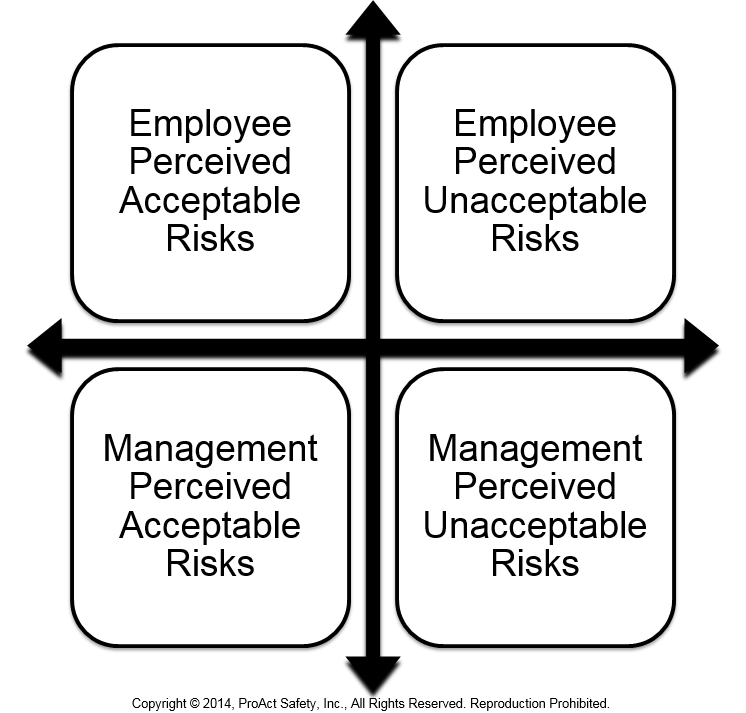Occupational Health & Safety - January 2015
By: Shawn M. Galloway
Printable Version
All progress begins by thinking differently. If we seek different results, we must ask more intelligent questions and realize today's answers will be antiquated tomorrow. What questions are you asking? Do you allow the status quo to remain unchallenged?
When the first skyscraper, the Tacoma Building, was constructed in Chicago in 1889, walking on steel beams high in the air without any protection from falling was the only way to complete the work. Performing such dangerous work, fatalities became so common in the construction of multi-level buildings that insurance adjustors would anticipate one death per floor constructed.
In 1927, the inventors of the bulletproof vest would demonstrate the quality and assurances of their work by firing live rounds, not at a mannequin, but at a live person. Confidence in product to secure sales took precedence over safety. This was viewed not only as acceptable, but impressive, and it built a community of customer confidence in the manufacturer's brand.
In March of 1923, a patent was granted to Emma Read of Spokane, Washington for a cage to hold a baby which could be, according to the patent, "suspended upon the exterior of a building adjacent an open window, wherein the baby or young child may be placed." Finally getting traction in 1937 as more and more individuals left rural areas and moved into cities, one group in London, the Chelsea Baby Club, also saw the health risk the patented device could overcome and issued their members these cages.
With the change from farmhouse living to city dwellings, this group of well-intending individuals were concerned that infants and toddlers were not getting adequate oxygen and sun exposure, so open-air steel cages were built and affixed to the exterior of buildings, often several floors above street-level, for the children to "play" in. Again, with good intentions, this was viewed not only as acceptable, but was perceived to contribute to a healthier child.
Since their inception, personnel working for electric and gas distribution companies were often required to climb over fences in order to access meters for billing purposes. Dog bites and confrontations with angry customers became common. Many of these companies are now installing automated meter reading (AMRs) devices to negate the need to access a backyard. Moreover, these organizations are working to change the perceptions of these hard working meter readers to believe it is no longer necessary or acceptable to "hop the fence", it is now considered an unnecessary risk by leadership.
What are the employee-perceived acceptable and unacceptable risks in your organization? How well do they align with management's perception of acceptable and unacceptable risks? Where does the documentation of this great insight exist in your organization? How regularly is it updated and improved? What experiences are hindering or progressing the lowering of risk-tolerance?

An energy exploration client, working aggressively to control and influence the behaviors (mandatory and discretionary) of their drilling contractors, engaged us over several years to help align their primary contractor cultures with their own. Visiting the various operating areas, the lead people onsite could all share an experience they had with the visiting Executive Vice President. When time pressure situations were discussed, they all heard him state, "The oil has been in the ground for millions of years; it can wait another day. We don't need to go so fast that it compromises safety."
While this was admirable and attempted to reinforce safety values, several times that same day, engineering would call these same onsite leaders who had heard the EVP's message to see how much progress had been made (how many stages had been completed). Sometimes to make progress, the right question isn't, "What do we need to do?" The question is often, "What do we need to stop doing?" or, "What are we doing that is sending the wrong message?"
We have come a long way in safety and will continue to make strides when executive leaders are aligned with the importance of integrating safety thinking into business decisions. Now, more than ever before, if we want everyone to be on the same page regarding the direction of the organization and the role safety plays, we need to discuss and document what is acceptable and unacceptable risk and close the gaps that might exist.

Shawn Galloway, CEO of ProAct Safety, is an expert in safety excellence. With almost thirty years of experience, he is a highly sought-after advisor, keynote speaker, and expert witness. Shawn has become a trusted partner to leading organizations across various industries worldwide. He ranks in the top 1% of the most prolific writers in his field, having authored over 500 articles and several bestselling books. He also launched the world's first safety podcast, Safety Culture Excellence©. As a recognized authority in safety, Shawn has received awards such as being named among the Top 50 People Who Most Influence EHS and a Top 10 Speaker, among others.
He is a regular guest on Bloomberg, Fox News, The Daily Mail, Dubai One, U.S. News & World Report, Sirius Business Radio, Wharton Business Daily, and leading safety magazines and podcasts. Shawn also serves as a member of the Harvard Business Review Advisory Council, Forbes Business Council, and Fast Company Executive Board, enabling his influence to shape safety thinking and strategy at the executive level.
